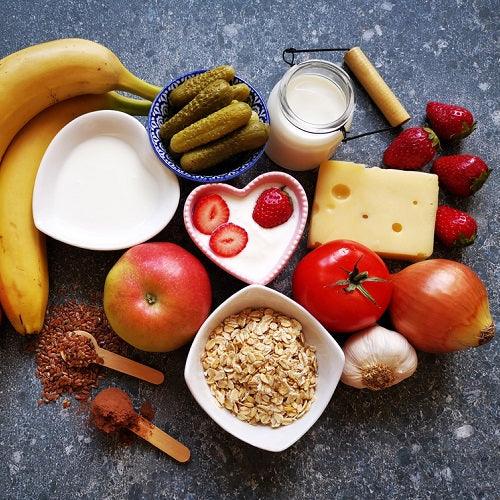What is Cycle Syncing & How Does it Work?
The menstrual cycle is fascinating, and changes in the hormones that happen during the cycle can be affected by little things such as exercise, nutrition, sleeping patterns, stress, and more. Because of this delicate balance of hormones, there is a practice called menstrual cycle syncing, which consists of adjusting your lifestyle habits to decrease PMS symptoms, lower stress, improve mood, and boost libido.
There are four phases of the menstrual cycle, each characterized by hormonal fluctuations. Here are some tips you can use from cycle syncing in each:
Menstrual Phase (Cycle Day 1-7)
During this menstrual cycle phase, when your estrogen and progesterone levels are low and your uterine lining is shed, (your period); choose low-impact exercises such as walking or yoga rather than strenuous exercise. Also, foods such as green leafy vegetables, red meat, lentils, and beans can help replace iron that is lost during this phase. Citrus fruits, berries, broccoli, and red peppers are good sources of Vitamin C to increase iron absorption. Vitamin K can also possibly reduce heavy bleeding, which is found in leafy greens, blueberries, cheese, and eggs.
Follicular Phase (Cycle Day 8-14)
Estrogen and progesterone start increasing in preparation for the next menstrual cycle phase. Your energy levels are increasing, so an exercise routine that includes hiking and light runs are great options. Eating foods that help metabolize estrogen, like probiotics, during this ovulation cycle is especially important for those who are overweight or have polycystic ovarian syndrome (PCOS). These foods include cruciferous vegetables like kale, broccoli, cauliflower, and leafy greens, which have phytochemicals that help with this estrogen balance.
Ovulatory Phase (Cycle Day 1-17)
At this time, a significant surge in luteinizing hormone (LH) plays a crucial role in triggering the release of a mature egg from the ovary. Additionally, estrogen levels peaks, and testosterone and progesterone are on the rise, signifying a pivotal hormonal change. This rise in hormones gives you energy, so during these days, incorporating an intense workout routine, such as high-intensity and cardio exercises, is recommended. With higher estrogen levels, a plant-based diet or anti-inflammatory foods such as fruits, veggies, and almonds are good choices.
Luteal Phase ( Cycle Day 18-28)
If the egg that was released during ovulation is not fertilized, hormone levels start decreasing, contributing to lower energy levels and mood swings and cravings for some. Light-to-moderate exercise such as pilates or strength training are good choices for physical activity. Also, foods that produce serotonin boost energy and mood, such as greens, quinoa, and buckwheat. Some hunger and craving symptoms can be improved by eating high-fiber foods, such as coniferous veggies, sweet potatoes, or leafy greens. Also, magnesium-rich foods, such as dark chocolate, spinach, and pumpkin seeds, can help against PMS symptoms of fatigue and low libido.
Supplements such as the pH-D® Feminine Health Holistic Menstrual Support can also be added to the cycle syncing as an additional benefit. Its ingredients of curcumin, chamomile, magnesium, and Alpha-GEE help in the reduction of bloating and swelling. Additionally, black cohosh helps reduce mood swings, and calcium promotes the reduction of menstrual discomfort.
If you think the cycle sync method can help you balance hormones naturally, it’s important to do some research and talk to your physician or healthcare provider if you have questions. The practice of menstrual cycle syncing is a good option overall to improve lifestyle habits and create a better foundation for a healthier you.
Are you in search of holistic solutions for feminine care? Our selection includes a range of feminine hygiene items, such as boric acid suppository, foam wash, travel-sized products, women’s health probiotics, as well as menstruation supplements aimed at easing discomfort, and much more. Feel free to reach out to us at pH-D with any inquiries.
Sources:
- Womens Health Network. Estrogen dominance diet: What to eat for hormonal balance. https://www.womenshealthnetwork.com/hormonal-imbalance/estrogen-dominance-diet/


